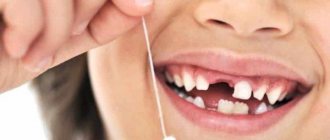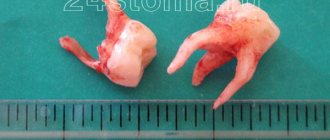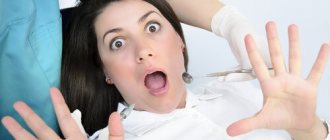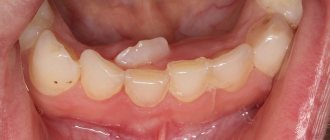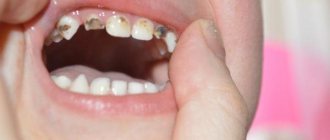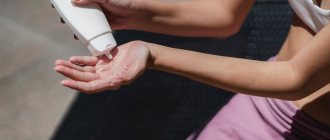The tooth extraction procedure is a surgical procedure. During this operation, the tooth and root are pulled out from the gum. Despite the apparent simplicity of the manipulation, the process can take a long time, especially if the case is complex and requires increased attention.
According to many patients, all dentists want to remove the tooth immediately. This is wrong. Qualified specialists at Dr. Jacques' clinic strive to preserve the beauty and health of natural teeth. If there is even a small chance to cure a tooth, they will take it. Well, if the case is serious and removal cannot be avoided, our dental surgeons with extensive experience will perform tooth extraction surgery quickly and painlessly.
How to pull out a baby tooth without pain
A baby is born without teeth because he does not need to chew food - breast milk or formula passes easily into the stomach.
At four to five months, the first milk teeth appear, which gradually fall out at five to seven years, being replaced by permanent teeth. You don’t have to go to the dentist to pull out a loose tooth—you can do it at home in a variety of ways. Before the procedure, it is important to make sure that the milk jug is ready for removal and that the child has no contraindications. Also, do not forget about cleaning the oral cavity after the procedure.
When can you pull out a child’s baby tooth at home?
Changing teeth is a natural and necessary process of development of the maxillofacial apparatus. The peculiarity of the structure of milk jugs is that they have short nerve roots, which makes their loss painless. In most cases, changing milk jugs occurs independently and does not require outside intervention. It is possible to remove a temporary tooth in cases where it is well loosened, but at the same time it interferes with speaking and chewing. In such situations, it is permissible to carry out the manipulation at home without visiting a doctor.
How to understand that you can pull out a child’s baby tooth:
- there is no pain or blood when the milkman staggers;
- healthy pink gums;
- the tooth moves easily back and forth in the hole;
- no stomatitis, gingivitis, tonsillitis;
- The child feels well and is healthy.
What instruments are used to remove teeth?
Dental forceps have been and remain tools for removing teeth. For certain groups of teeth, a different type of forceps is used, since our teeth have different structures and are located differently in the dentition. For example, to remove the upper anterior tooth and the maxillary canine, there are straight forceps, and the remaining upper teeth are removed using S-shaped ones. The incisors of the lower jaw are pulled out using forceps curved at 90º with narrow cheeks (the part of the forceps that grasps the crown or root of the tooth being removed). The fangs and the two teeth following them are pulled with forceps, on the contrary, with wide cheeks. To remove large molars of the lower jaw, forceps with spikes that go between the roots are used.
Contraindications to tooth extraction at home
Before choosing a method to extract a tooth yourself, it is important to make sure that this manipulation will not cause harm. The presence of the following manifestations is a contraindication for removing thrush at home:
- redness of the gums;
- strong adhesion of the tooth to the jaw;
- thickening of the gums due to swelling;
- the presence of blood or pain when the milkman staggers;
- increased body temperature, signs of acute respiratory viral infection, sore throat;
- the child has severe fear.
When performing a manipulation, you cannot hold the child by force, otherwise the fear of performing procedures in the mouth will remain for life. In all doubtful and complex cases, you should contact a specialized specialist - a pediatric dentist.
Children often experience carious lesions in primary teeth, leading to their partial destruction. Such situations require a mandatory visit to a doctor with subsequent treatment or removal. Even severely damaged carious teeth cannot be pulled out on your own - this will lead to pain and injury to the gums and lips.
Preparing a child for tooth extraction
Before pulling out a child’s tooth, it is important to carry out psychological preparation - explain in a calm voice the essence of the procedure and its purpose, emphasizing that it is not painful and quick. You can come up with a fairytale story about the milkman's journey or tell that mom and dad also had their temporary teeth pulled out.
You also need to ask the child to swing the tooth as much as possible with his tongue - this will make it possible to quickly pull it out of the gums. When the milkman wobbles, its short nerve endings are torn off or pulled out of the canals, so there is no pain syndrome.
Carrying out the procedure, simple tips
On the Internet you can find a lot of advice on removing temporary teeth, containing both descriptions of traditional methods and absurd proposals using improvised means. It is always important to think about the safety of the action for the child’s health and the possible consequences; it is better to give preference to one of the following two methods:
- use fingers and a handkerchief;
- apply thread.
Regardless of which manipulation it is decided to remove the milk duct, both participants in the procedure need preliminary preparation aimed at preventing infection. Before pulling out a baby tooth, an adult should thoroughly wash their hands with soap, and a child should rinse their mouth with warm water.
You can remove the milk jug like this: take a clean cloth, grab it and sharply pull it up if the tooth grows from the lower jaw or down if it grows from the upper jaw. This manipulation usually scares children, so they often resort to a more popular method. How to pull out a child's baby tooth using floss:
- Position the light source so that the oral cavity is well illuminated.
- Take a nylon thread about 30 cm long; tie one end to the loose tooth, making 4–5 turns around it; wrap the other around the index and middle fingers of an adult.
- Make a sharp movement with your hand, jerking your hand down if the milk duct grows on the upper jaw or upward for cases where the tooth is on the lower jaw.
Tooth extraction, if all conditions are met, takes no more than 5 minutes and is not accompanied by pain or other unpleasant sensations. Correctly performed manipulation does not leave the child afraid of the dentist and manipulations in the oral cavity.
Tips on how to pull out a tooth yourself correctly:
- position the thread so that it does not touch the lip, otherwise there is a risk of injury;
- do not use improvised means and tools;
- make sure the milk jug is ready to be removed.
If the tooth is well loosened, but the child is afraid to remove it with floss or fingers, and does not want to go to the doctor, you can give it an apple to chew on - solid food will cause the duct to fall out quickly and without pain.
What does the dentist use during surgery?
The process of tooth extraction is quite complex, despite its apparent simplicity, so different tools, techniques and materials are required. The main tools are forceps of different lengths and sizes for pulling out different teeth, elevators, chisels, excavators and a drill. The need to use a particular instrument is determined only by a doctor.
The technique used to remove a tooth is entirely determined by the degree of its destruction. Removal can be simple (using only one instrument), complex (when it is necessary to use two or more instruments) and atypical (if it is necessary to make an incision in the mucous membrane).
From materials, dentists use anesthesia (local or sedation), as well as high-quality suture material and a hemostatic sponge. All this is necessary to ensure a good result of the operation.
Oral hygiene after tooth extraction
Immediately after you have pulled out the tooth, you need to moisten a cotton ball with chlorhexidine and place it in the hole for 10 minutes. If a small amount of blood appears, then use hydrogen peroxide for these purposes - it not only disinfects, but also helps stop minor bleeding.
To form a full-fledged blood clot, as well as to prevent food particles from getting into the wound and causing infection, after the manipulation the child is not allowed to eat or drink for 2 hours. Please note that alcohol and vodka are not used to treat wounds in children.
Further care after baby tooth extraction:
- On the first day, brush your teeth without touching the socket with the brush. You should not use a paste - its components will irritate the wound surface.
- Rinse your mouth with chamomile decoction and a weak soda solution 4-5 times a day for 5-7 days. It is imperative to carry out this procedure after eating to remove food debris - otherwise an inflammatory process may develop.
- Eliminate salty, spicy and hard foods from the diet for 5 days. These products have an aggressive effect on the mucous membrane and can cause bleeding from the socket and pain.
- In children with frequent inflammatory diseases of the oral cavity, a warm antiseptic solution of furatsilin can be used for rinsing.
Author: Zhukov M.A.
What does the sensation of pain depend on?
How painful it is to pull teeth, according to research, depends on several factors. In the same patient, the intensity of pain during extraction may vary depending on the following signs:
- a molar or baby tooth needs to be pulled out - removal of a baby molar is almost painless, since it does not have powerful long roots, like those of a permanent one;
- location on the jaw arch - frontal molars are removed with a feeling of much less intense pain, since they are smaller in size, their root system is not as developed as that of the lateral teeth. The same can be said about trauma to the surrounding soft tissues - they suffer less, especially in comparison with wisdom tooth extraction;
- tooth shape and number of roots - by nature, human molars can have 1-2 or 3-4 branches of a stabilizing root system. So, tooth extraction will be more uncomfortable the more root branches the molar has.
It is necessary to clarify that whether it is painful to pull out a tooth depends not only on the listed factors, but also on the perception of the procedure by the person himself. If you experience a feeling of panic and intense fear before the extraction, this psychological state can directly affect the procedure and actually provoke intense pain. There are many stories among patients not only about how much pain is felt during extraction, but also that there is a big difference whether a molar is removed from above or below, supposedly this affects the intensity of the discomfort.
We need to figure out whether these rumors have a scientific basis. Dentists claim that, regardless of the location of the tooth, it can be removed completely painlessly if high-quality anesthesia is administered, but the jaw may begin to hurt after the end of the freezing period. The severity of the pain syndrome will depend on several points:
- how much bone and soft tissue was destroyed;
- is there an acute inflammatory process at the time of removal;
- a frontal or lateral tooth is subjected to extraction;
- the lower or upper molar is removed;
- whether there is an accumulation of pus in the area of the unit being removed.
According to medical statistics, the removal of the upper incisors is less painful, since their root system is not as powerful and tortuous as that of the lower teeth.
The fact that lower units are more difficult to remove from the bed is also due to the density of the bone tissue. All these factors directly affect the degree of destruction and recovery time after the molar has been removed. Therefore, it makes no sense to say that it is painful to remove the lower teeth, but not the upper ones; the location will only affect the adaptation period after extraction.
